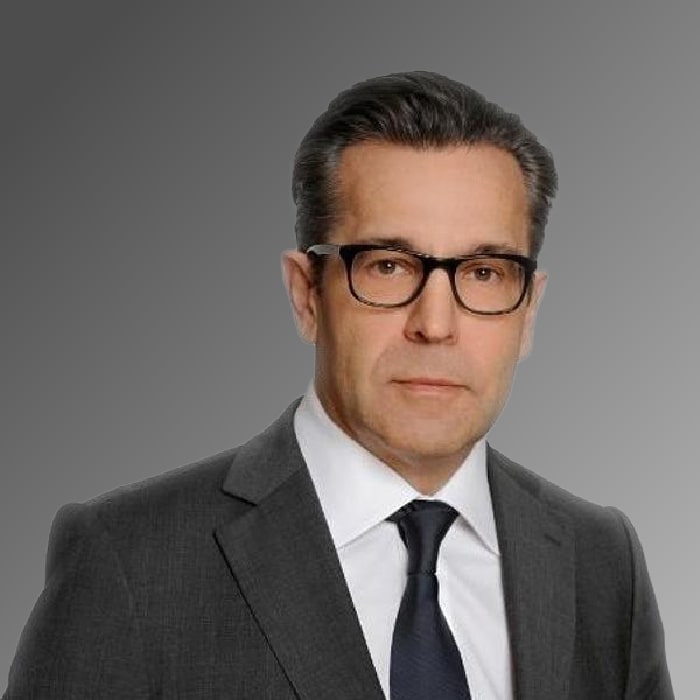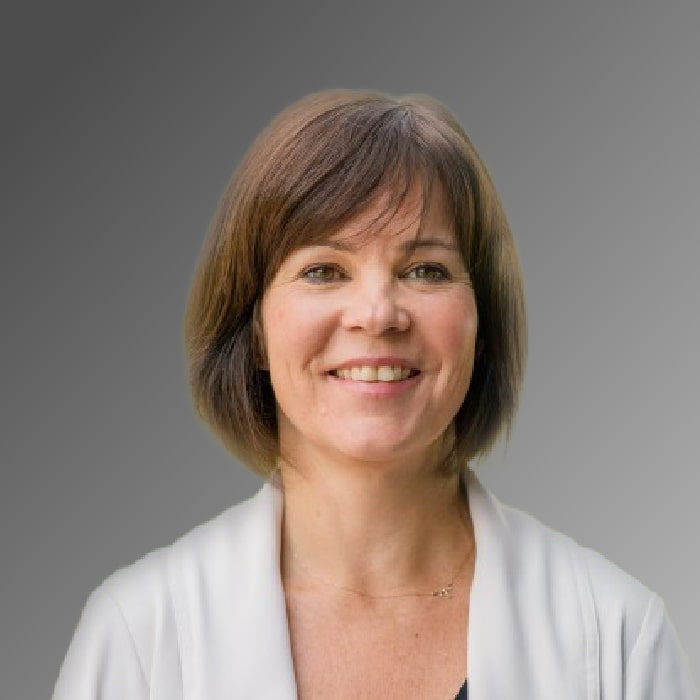Stanley Ventures President Credits Success to Expertise to M&A Experience
May 13, 2024
Interviewed by Nicolas Sauvage on April 16, 2021
Stanley Ventures views investments as a means to becoming not only a shareholder but also a commercial partner with early-stage companies so it can bring all of Stanley Black & Decker’s resources to bear. President Dina Routhier joined Corporate Venturing Insider to explain the process.
She said Stanley Ventures deserves to be compensated for the value it brings in addition to funding while not stifling the startup’s growth potential.
Dina’s Path to Stanley Ventures Leadership
After gaining experience in several facets of business finance, Dina quickly realized she wanted to run the show in a corporate venture capital setting. She began fulfilling that dream when she was named president of Stanley Ventures in December 2020. Her ascension to the corner office is the culmination of a steady climb up the corporate ladder that began with her job as a commercial lender at Bank of America.
After five years of learning all there is to know about structuring senior debt loans for high-tech companies, she got her first taste of venture capital with a position at Mass Ventures, which continues to fund early-stage tech startups in Massachusetts.
“I was there for 12 years, and I learned how to do early-stage investing in an apprenticeship style,” Dina said. “I shadowed the president, took board meetings, and through the structuring of early-stage investments, learned what to look for in promising startup companies. I did a ton of investments while I was there and got a ton of board experience. Through those 12 years, I was able to really see my network of entrepreneurs and venture capitalists flourish, not only in Massachusetts, but also nationwide.”
After 12 years there, her daughter was starting school, and she was ready to answer when Autodesk came calling. Her role there was a step away from CVC and into mergers and acquisitions.
“I learned a new skill set, how to structure and execute M&A transactions. I structured and closed 10 acquisitions while I was there,” she said. “Nine of my 10 transactions were sub-$20 million purchase price acquisitions, so I was still working with early-stage companies, many of which were doing less than $5 million in revenue. Some were profitable, but not all. So, it was interesting to see how that one company utilized M&A to stay at the forefront of technology innovation. Autodesk didn’t have a fund and didn’t have a specific strategy for CVC at that time, but we would do them opportunistically. and so, I was able to close two investments while I was there.”
While she is thankful for that experience, the job solidified her belief that she is cut out for CVC. She joined Stanley Ventures in 2017 as an investment director with her sights firmly set on the big chair. When her predecessor retired, Dina was the obvious choice to step up.
Lessons from M&A and Evergreen Fund Models
Dina’s vast early-stage experience in both venture investing and M&A — suits her preference and Stanley Black & Decker’s focus. She credits her time working with Autodesk’s integration team for giving her a foundation in supporting entrepreneurs and how the vetting process can anticipate problems that could arise in the transition phase.
“The success or failure of any acquisition, whether small or large, really rests with the integration team,” she said. “That is where you extract the strategic value, and I saw some go well and some not go well, as you would imagine.”
She said keeping founders motivated post-acquisition is key, especially for tech leaders fully engulfed in the entrepreneurial spirit. Tech startups are often headed by adrenaline junkies who live, eat, and breathe the excitement of seeing their ideas come to life. They move fast and wear a lot of hats, Dina explained. Their Type-A personalities sometimes get bogged down in the corporate culture after they are acquired by a larger firm.
“They often experience death by meeting or death by process,” Dina said. “This is something that they don’t naturally fit into. Some of the founders could make that change and make that leap and integrate themselves well into a larger company. Others just bristled at that. They felt Stifled. And as the acquirer, sometimes nothing you do would be able to make that entrepreneur happy.”
Where the founders’ personalities did not lend themselves to working within the corporate structure, they could still maintain a profitable relationship with Autodesk.
“They start this great company, grow it, and then sell it to Autodesk,” Dina said. “Then they stay inside that company for a while, where they have a bird’s eye view of the problems that that larger company is facing and needs to solve. The really smart ones then would leave Autodesk and start a new company to solve one of those problems and then sell that next company to Autodesk, which I just think is such an amazing way for entrepreneurs to figure out what they should be going after. What’s the next great idea? They don’t have to think of it themselves. They can go inside, identify what it is, then come outside and solve it.”
Entrepreneurs who could flourish within Autodesk, on the other hand, presented themselves early in the process, Dina said. The due diligence task allowed her team to observe the interactions between the acquisition target/portfolio company and the mothership’s technical and product management teams. Deals were more likely to succeed when great chemistry existed naturally or where the acquisition/investment division could iron out differences early in the process.
The big takeaway from working at Mass Ventures, she said, is “as long as you can make successful investments and exit them, you don’t have to go out and raise money every five years from a bunch of limited partners.”
The challenge comes when the timing doesn’t work out perfectly, and “you don’t time things absolutely correctly, and you don’t have the exits coming in to replenish the fund,” Dina noted. “A couple of years while I was at MassVentures we would do only one new investment because we had some great companies in the portfolio, but we hadn’t exited them yet. You can have a really slow period. If you’re a deal doer who likes to hunt new deals and become part of syndicates, the waiting can become frustrating.”
Early-Stage Priorities
Dina outlined her three-pronged test for whether an investment is right for Stanley Ventures:
1.Is the right management team in place to work through the ups and downs of the early-stage years? “I’m always harping on the quality of the management team,” Dina said. “Does this management team bring domain expertise that will allow them to avoid the pitfalls as much as possible, and do they come with the connections in the network that will allow them to perform the early-stage go-to-market efforts effectively?
She said it is rare to work with founders who have proven themselves capable of moving from industry to industry successfully. The team needs to add domain experience to anticipate how customers may want to buy the solution effectively.
“You may have an amazing solution that solves somebody’s problem, but if you’re not selling it to them in the way that they want to buy it, success will be elusive.”
The right team also will display the integrity to follow through and not oversell their product. Evaluating startup management is both science and art, Dina said, so it’s critical to form an evaluation and acquisition team of experienced dealmakers and early-stage investors.
2. Is this company targeting a substantial total addressable market? Because Stanley Ventures does not need first-refusal or first-notice rights, it walks a narrow path to value. What is important for the mothership is a first-mover advantage against “a small subset of competitors for a specific period of time,” Dina explained. So, you can see how that is a very tight rope to make sure that you’re getting compensated for all the great things you’re bringing to the table, while also in putting your investor hat on and making sure that you are leaving a significant amount of the startups’ TAM available for them to go capture.”
She said the best deals her CVC organization enters involve amazing technology focused in an industry outside of Stanley Black & Decker’s focus. The portfolio company may have an insurance use case, for example, that her team sees can work in power tools. The portfolio company hadn’t considered this application, so Stanley Ventures funds its development in exchange for exclusive use rights for a time after it matures.
3. What is the strategic alignment to one or more of Stanley’s business units?
“How can we utilize our relationship and the commercial partnerships to grow new innovative sources of revenue for Stanley Black & Decker,” Dina asks.
To answer that question, Stanley Ventures embeds team members within units to fully understand their function. That way, “we know exactly what they’re looking for,” she said. “We know where their gaps are and where they’d like us to look to find them. With those marching orders, we go into the market and look for startups that couldmeet those needs.”
The search takes place under Stanley Ventures’ mandate to invest in early-stage companies where a mutually beneficial partnership can be formed to generate new sources of revenue for the mothership.
“I have had to pass on some super-interesting investment opportunities because we can’t generate new sources of revenue for them. Indirectly, we can utilize the technologies in our own operations to make our own operations way more efficient, but it doesn’t strictly fall into the definition of what Stanley Ventures has been created to do.”

 Given its narrow focus and small window for profitability, Stanley Black & Decker insists on a first-mover advantage over a few competitors when a portfolio company’s products come to fruition.
Given its narrow focus and small window for profitability, Stanley Black & Decker insists on a first-mover advantage over a few competitors when a portfolio company’s products come to fruition. 



















